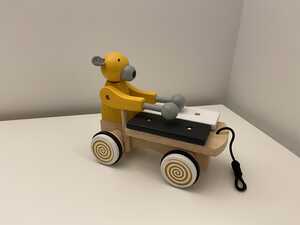
The other day, we had a White Elephant gift exchange at work. I came away with the following adorable toy:

The idea is that you pull it around by the cord to produce sounds; two offset cams are mounted on the rear axle, which drive the bear’s arms up and down via vertical rods set as cam followers. (One such rod is visible under the bear’s right arm in the picture above.)
This is quite fun to play with, but the problem is that it requires some amount of space to drag the bear around in order to produce sound continuously; if you stop dragging the bear around, the sound stops. This makes it slightly impractical as a desk toy. (Or maybe my desk at work is just too crowded.)
Anyway, this inspired a fun weekend1 project: building a small treadmill to place under the toy, in order to continuously produce sounds without having to drag the bear around. Naturally, I turned to my favorite prototyping medium: the Lego brick!
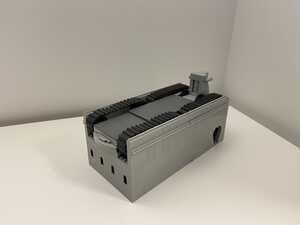
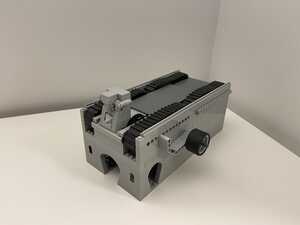
The basic mechanism was not too difficult to create; it’s just a hand crank (the circular tire in the picture) driving some belts. There’s a bit of gearing to increase the speed of the tracks; torque isn’t really a problem here, but the track needs to be spinning decently fast in order to get the bear striking the xylophone at a reasonably fast rate. Some amount of searching had to be done before I managed to scavenge together enough light gray pieces to complete the box; just for fun, I decided to make it somewhat castle-themed, with some decorative pieces and a hidden little dragon and mouse inside. If I had more than a weekend to work on this, I’d probably invest a bit more in the exterior design.
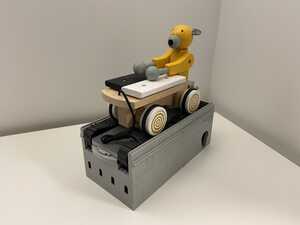
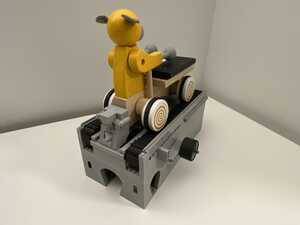
My initial version was about half the height of the final version; it just had a simple knob that spun the tracks. However, this turned out to be not that ergonomic, so I decided on a crank, which required significantly more height.

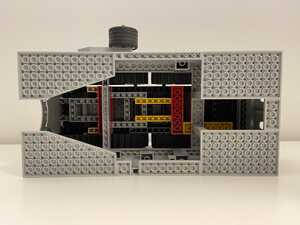
This model actually works decently well. Perhaps I’ll link a video of it in action if I ever get around to recording one. For Mark II, I’d ideally like to motorize the whole thing, although there’s a slight complication: when I was a slightly-too-curious kid, I took apart my only Lego Power Functions motor to see what was inside. I do have some Lego NXT motors lying around, but these have to be programmed, so I need to see if there’s a FOSS alternative to the proprietary Lego programming software. I’d be highly surprised if there weren’t, but I need to go look for one.
Many “weekend” projects actually take longer than a weekend, but this one was actually done on a strict schedule: I worked on it on Friday night and on Saturday.↩︎
Comments